Interview with dbox
dbox was founded fifteen years ago in New York by architects who are passionate about the art and business of our creativity. I’ve considered dbox as a great source of inspiration from my get go in this field and their global team now includes professionals with recognized expertise in brand creation, marketing, and advertising. They have offices in New York, London and Taipei.
Mark Gleghorn, Partner of dbox offered me a unique insight into dbox, their CGI department and its global operations. Mark has over a decade of creative direction experience. His tenure with dbox began in New York in 2004 before he moved back home to England in 2010 to establish and operate dbox London.
So… Let’s begin. Enjoy!
Hi Mark, please tell us how did dbox get started, and what exactly does dbox mean?
dbox was founded the mid 90s by three architects: Matthew Bannister, Charles d’Autremont and James Gibbs, all of whom had found a collective fascination (some may say obsession!) with the potential of CGI for portraying architectural design.
The name dbox comes from ‘dialog box, Arch 372’, a class the founders taught at Cornell University. dialog box was a description they used to describe computer visuals being interactive and having a narrative. dbox the company was born of that marriage between dreaming of virtual un-built worlds and a passion for architecture and multi-disciplinary design.
What are the major differences between then and now?
Then, we had to chase prospective clients, often using guerrilla marketing tactics like sneaking into their offices in order to convince them about what we had to offer! For example, the majority of architects in the mid 90s still made use of watercolour visuals for their client presentations, so not only was a meeting with a potential client an attempt to sell dbox it was also an attempt to sell CGI as a discipline. Thankfully, we managed to convince them of both to get the business up and running in New York.
Like many creative studios we have evolved since those early days. dbox is now a branding and creative agency with studios in New York, London, and Taipei. We have built long-term relationships with many of the worlds foremost property developers and architects which has allowed us to create campaigns and presentation material for award-winning architecture and developments.
We are very proud of our client roster and working closely with clients, as clichéd as this may sound, really is what has got us to where we are today. Our multi-disciplinary expertise informs everything we do, including our CGI work.
Now, thankfully, we dont have to resort to jumping out from behind our clients photocopiers anymore!
Can you share more information about how the offices work among themselves and what are your future plans? Are you looking to expand even further then you have so far?
We are very busy in all three locations at the moment, providing marketing services for a number of various clients. Expansion is always a possibility but whether that is expansion of our existing studios or the opening of new ones remains to be seen. We are always happy to hear from talented people from all disciplines as we can only progress by continually improving as a group.
Can you share some photos of your studio / work environment?
Were a little shy, however I would like to share with you some of our photography we have recently showcased in the purpose-built galleries in our offices. The photography acts as an inspiration to ourselves and we hope, our clients. The shots were taken by in-house Photographer and dbox London partner, Mark Bannister.
On a more personal level, I can share with you whats on my desk. Im currently engrossed in a monograph of Marcio Kogans work, an architect I know you are a fan of, and with whom we are working with at the moment. I cant tell you too much now, but I will certainly let you know when the project is public.
Can you tell us a little more about how dbox first became interested in the possibilities CGI for architectural rendering?
Like I mentioned, we are a company born in the 90s, a time when marrying CGI technology and architecture was still in its infancy. Of course, the technology has changed but some of our architectural points of reference are very much unchanged for us. Our appreciation of great architectural visions and those that helped create the visual for example. Influences such as Hugh Ferris not only had an impact on how to represent architecture but also architecture itself. We find it mesmerizing how powerful an image can be. We could happily talk all day about our inspirations!
Of paramount importance in realising CGI and architecture has been an understanding of photography and its relation to our process and style. Equally, the strongest results, in particular photo-montage and film are typically most successful when composed against good photography or footage. When we feel photography is a necessary component of a clients scope we will suggest a photo shoot, wherever the site is.
Can you please tell us a bit more about the importance of photography in what you do?
It is essential. Great contextual architectural CGI requires great photography and our in-house photographers travel the world to make sure that we get this. We have also built an extensive library of photography from around the globe, including major projects that we have been involved in. We should get round to publishing that someday!
Our photography department is focused on an array of disciplines in order to service our marketing campaigns. The department is responsible for lifestyle photography whereby we are casting, styling and photographing models as part of a campaign or perhaps to populate an interior CGI. A campaign will likely also require photography of a sites vicinity or neighborhood.
dboxs CGI has a unique and recognizable visual style, how would you describe that style?
Its interesting to talk of a unique style when you consider dbox is a global company, operating for over 15 years and with dboxers originating from all over the globe! dbox is a great place to learn in particular about representing architecture and architectural intent. Balance that teaching with years of experience and I think you have the foundation of our style. That style pervades company-wide through all disciplines, whether it be strategy, graphic design or CGI.
We have a lot of repeat custom which I think represents an appreciation of our work. We are fortunate to have clients who provided us with fantastic constructive feedback and commentary. One of my favourite comments was a client who told us they could smell the quality of the light in our imagery! Beautiful! We love feedback like that. If our clients can envision the sound of themselves walking across a computer-generated highly polished marble floor, then the person or organisation theyre selling or presenting to will likely have the same feeling. If the viewer can connect with our imagery then we feel thats a success.
Its worth also noting all our work is created in-house, including our CGI, and this enables us to follow procedures that ensure we maintain our trademark quality in all aspects of our work. If this quality were to dip, then so would our reputation. We are aware that we are only as good as our most recent work. Of course, by not outsourcing work we sometimes have to turn down projects we would like to do when our schedule is full, but thats the way our cookie crumbles.
One of my favourite dbox projects is Dellis Cay, where I also like the website very much. How was it to work on this project, doing the initial preparation work and being that so many starchitects are involved?
Surely you mean liked the website: it was changed considerably by the client from the one we created! It was definitely a unique and interesting project and a privilege to collaborate with the architects involved, many of whom we consider clients.
A more recent project, and part of an equally successful campaign, is the marketing film we created for New York by Gehry as part of our full service involvement. The film seamlessly includes portions of CGI as the exterior of the tower was under construction during our involvement. Ill let you try to spot the CGI elements!
Can you tell us about some of your other recent CGI projects?
The CGI we produced for Foster + Partners design for the West Kowloon Cultural District is a great example. The site is a 40 hectare mixed-use waterfront development which we helped representation with 15 images for presentation by Foster + Partners. The CGIs are currently been exhibited in Hong Kong. We assisted Foster + Partners to select vantage points which helped best explain the design from a human perspective, throughout the course of a typical day. Narrative was a key element to help explain usage of the design, but also engage the viewer. I must add, much of the design was still at a low-detail master plan level which meant a significant portion of artistry was applied by dbox to help set a more complete, believable scenes.
The motion work we recently completed for the Discovery Channels Rebuilding Ground Zero series is also worth mentioning. dbox has been involved at the World Trade Centre site in New York since 2002 and we have been working on one or more of the projects at the site ever since. Most recently, we collaborated with KPI, executive producer Steven Spielberg and DreamWorks on Rising: Rebuilding Ground Zero for the Discovery and Science Channels. Rising is a six-part documentary series that chronicles the activity at the Ground Zero site and tells the personal stories of the construction workers, engineers and architects who have worked to make the vision a reality. dbox provided brand identity, graphic design, CGI and aerial cinematography for this landmark series. We feel enormously privileged to have been able to contribute to such a significant and inspiring project.
Hot of the press is a job with UNStudio for their first project in the UK. We assisted UNStudio and the development team with their planning application, which we are happy to hear has recently been approved.
Lastly, a project SDA architect who are located in Los Angeles is a good contrast to the larger practices and organisations which I mention above. SDA are a smaller outfit with previous tenures at Zaha Hadid, Future Systems and Amanda Levette Architects all of which has resulted in a fantastic and fresh approach to architecture. We joined them on their competition entry for the New Taipei Art Museum.
How much time do you typically spend working on a CGI? Does one artist work on any given image from start to finish, or do you break it up to say… modelling, post-production, etc.
Typically, one or more artists work on an image throughout our process, with a Director signing off each stage. The production times of still images are relatively short so those responsible for the artwork do have involvement from start to finish. Certain members of the team are stronger at specific tasks or have a greater interest in a particular area of our production so we are always helping each other and suggesting more productive solutions to problems.
Can you give an indication regarding the balance between pure render and post production in your CGI work?
The scope of our portfolio is vast as are the ratios between pure render and post production. We look for talent who have an ability to use Photoshop and understand its strengths.
Is there time left for any other activities besides work at dbox, like personal projects for example?
My answer partly goes back to your earlier question about the possibilities of CGI, we are keen dboxers feel open to explore creative pursuits both at work and personally.
On the whole, being creative isnt a singular activity.
In-house we do like to take a step back and re-consider our work differently but using the tools at hand. One example is our involvement with 125 Magazine. A quarterly magazine published globally which offers photographers the opportunity to submit photo essays based on a one word brief. I would like to share with you our entries for Future and Cinema. Ill let the visuals do the talking!
We also provide time to research areas of interest, whether that be new software or the latest exhibition.
What software and hardware do you use in the studio?
We use a combination of 3ds Max, V-Ray, Photoshop for still work and Fusion and After Effects for motion work. The workstations are typically custom built in-house by our IT team depending on requirements and usage.
The technological advances in software and hardware allow more people to enter the architectural visualization field with less effort and experience. Does that affect you?
The reputation we have established goes well beyond being technically proficient. The tools of the trade are simply that, just tools. Having a vision and understanding how best to create an engaging visual narrative is more important. Treating each image as a scene, almost like a film set, is typically how we approach our CGI work. Each scene is carefully art directed to tell the right story. Our CGI team are storytellers.
How do you see CGI technology developing in the coming decade?
Technological improvements will continue to make access to CGI simpler but there will always be a whole lot more to great illustration than software. Well, until the computer can learn from its own life experiences and develop an artists eye, we should still be able to make a living doing what we love doing!
www.dbox.com
New York, London, Taipei
twitter: @dboxcreative





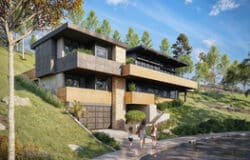
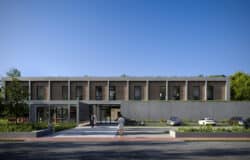





























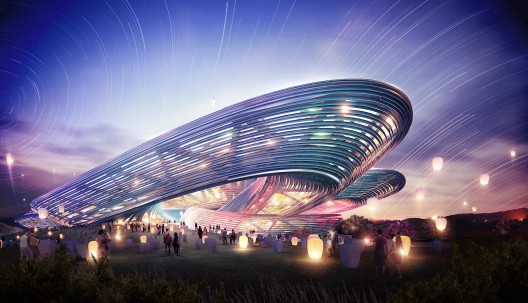



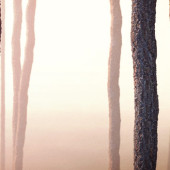
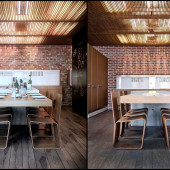
Congratulations for the excellent interview! I´ve been a fan of Dbox for years. I specially like the way they work with light and the artistic photographic feel of their images. Definitely top quality work. Thanks, Ronen for the great article. Keep up the excellent work.
how do you do this ?! AWESOME, thanks !
really beautiful renders.I like it.
Thank you for a very interesting interview with a long time favorite 🙂
Very nice interview, and a lot to see how this guys has an appreciation of each image they work on, they are storytelling this describe everything!!!! Awesome interview from an unbelievable source of inspiration called DBOX.
Wow.. your work is stunning 🙂 May be throw in some tutorials? 😉
I’ve been a DBOX fan for a long time, it’s such a delight to read this intervew, Thanks to Ronen Bekerman for this interview and to DBOX for doing that great work!!
Congratulations from Mexico!!
Nice interview and awesome work!